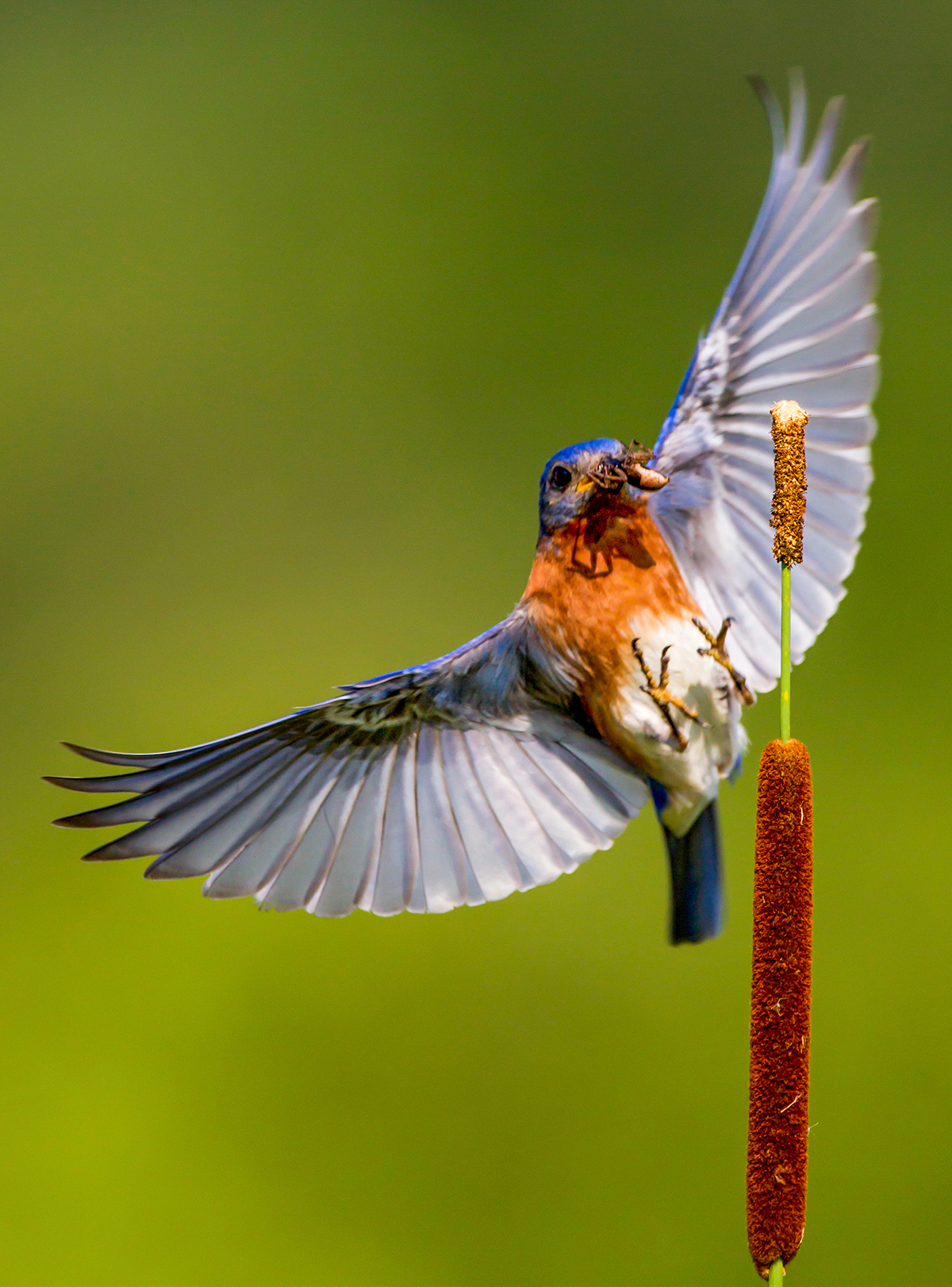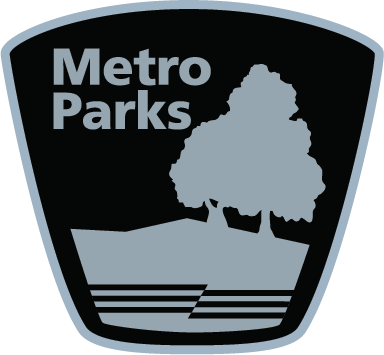JERRY FRITSCH
(From his 2015 Parkscope article)
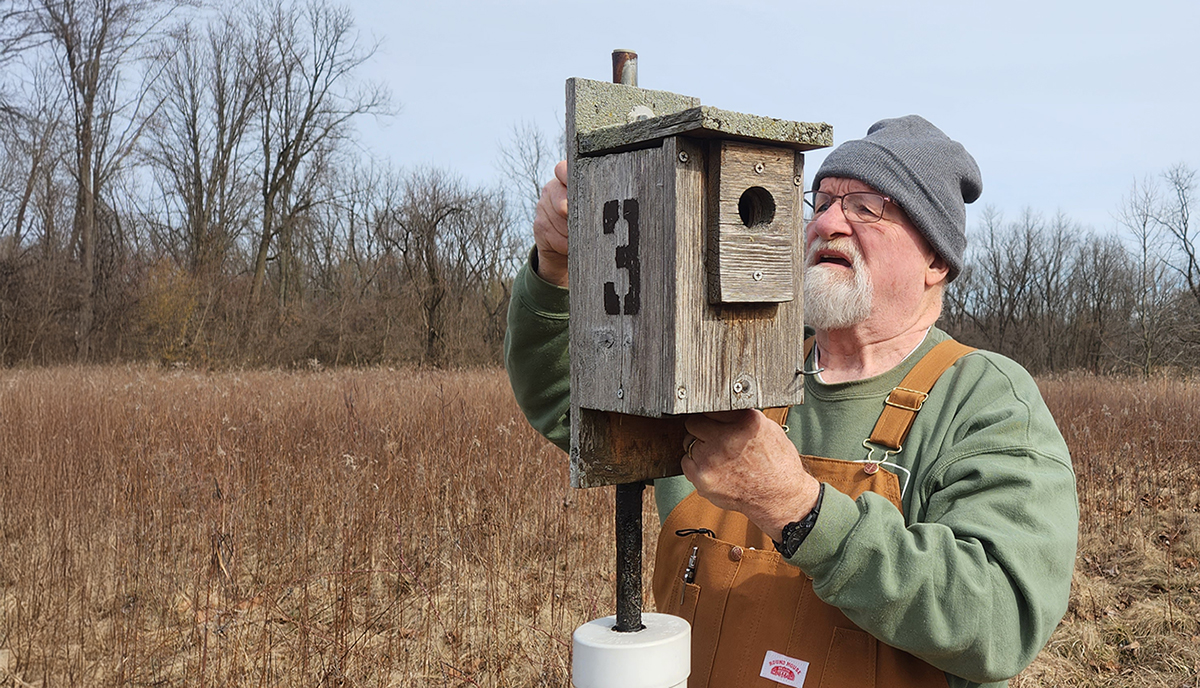
Some of you might have driven down a country road in summer and caught a glimpse of a blue bird sitting on a fence post or a wire. Others might have seen some type of blue bird perched on a bird house in one of the Metro Parks. When you get a good look at it, you might say, “That can’t be a blue jay. Blue jays have ‘dots’ on their backs and tails. They are a larger bird.”
Other smaller blue-colored birds have a completely blue chest and neck. These can be blue grosbeaks, or the bird most often confused with a bluebird, the indigo bunting. Notice that the chest and neck of a true bluebird has a slightly orange tint and a white belly. This is a male eastern bluebird. While adult male bluebirds are a vivid blue on their backs, female bluebirds are more of a light-blue or even gray and have a light orange chest and neck.
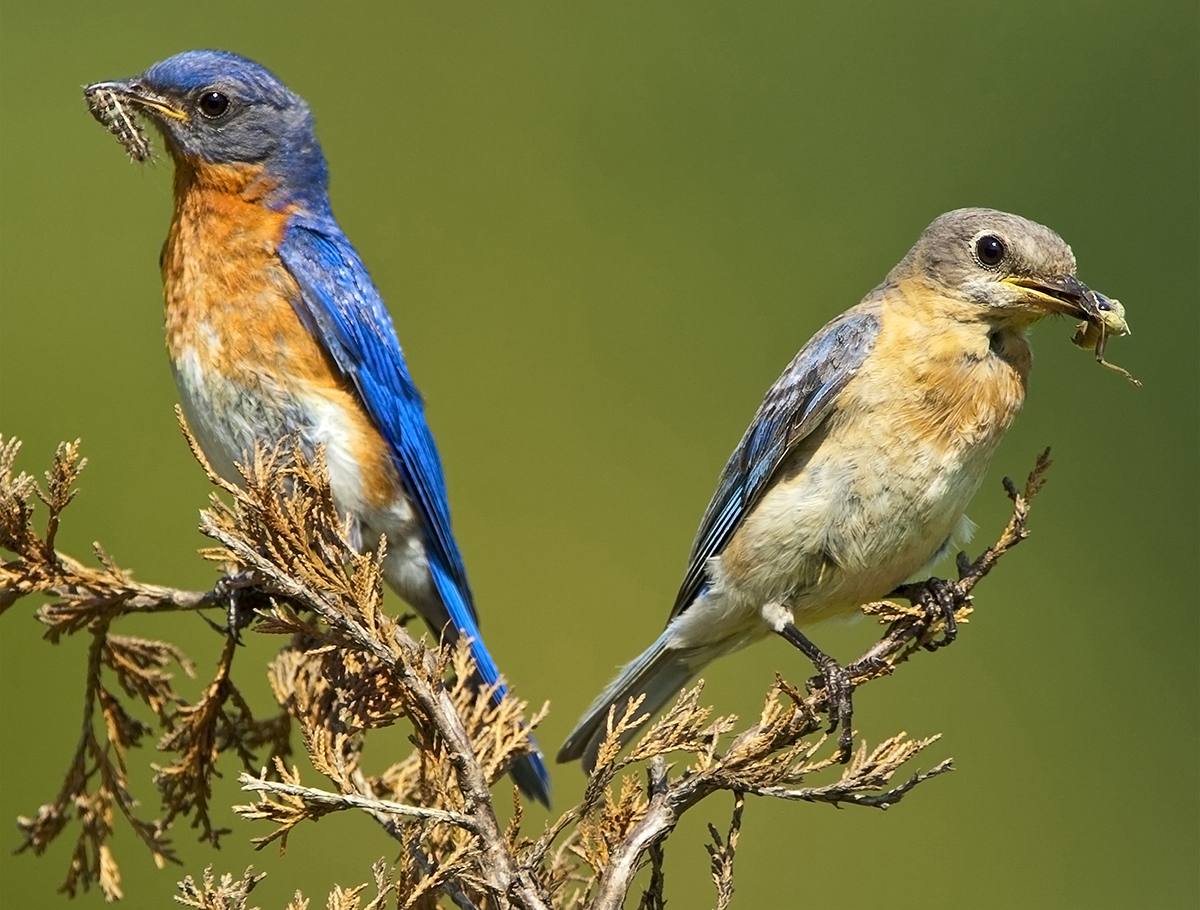
History
In the early 1900s, the bluebird was one of the most common rural songbirds in Ohio, but because of their loss of habitat, their numbers have started to dwindle. Some of that habitat loss has been due to human development that has expanded into their traditional homes. Another part of their habitat loss was due to displacement as house sparrows and European starlings were introduced into their natural range.
In the first half of the 20th century, some bluebird populations declined by as much as 90 percent. The loss of natural nest sites to house sparrows and starlings continues to be the primary reason for bluebird struggles. Bluebirds traditionally made their nests in the cavities of trees in open-field grasslands or prairie-type environments with wooded areas nearby. As farming and housing developments have grown, the number of house sparrows has increased. They began nesting in the same tree cavities that bluebirds were using. Starlings, being a very aggressive species, also began to take over the tree nest cavities.
Conservation efforts
As the numbers of bluebirds began to decline, people noticed this and began conservation efforts. Since the 1960s, the bluebird population has grown about 2 percent each year. People started developing bluebird trails, a series of bluebird boxes established to foster the growth of bluebird nests. These bluebird boxes were designed to keep out larger birds. For example, they were located away from places where starlings were likely to nest.
In Ohio today, many bluebird trails have been set up, some on private property, but most have been established on multi-use public property such as parks. Metro Parks has been a proud partner in bluebird conservation and continues to establish new bluebird trails and place new bluebird houses every year.
Bluebird nesting
Bluebirds typically start building their nests at the end of April. Females will perch on bluebird boxes, and males will bring in grasses for nesting material. If she likes the presentation of the nesting material, the female determines that this male would be a good provider — so he becomes her mate. The male continues to bring in nesting material to the female, who in turn builds the nest.
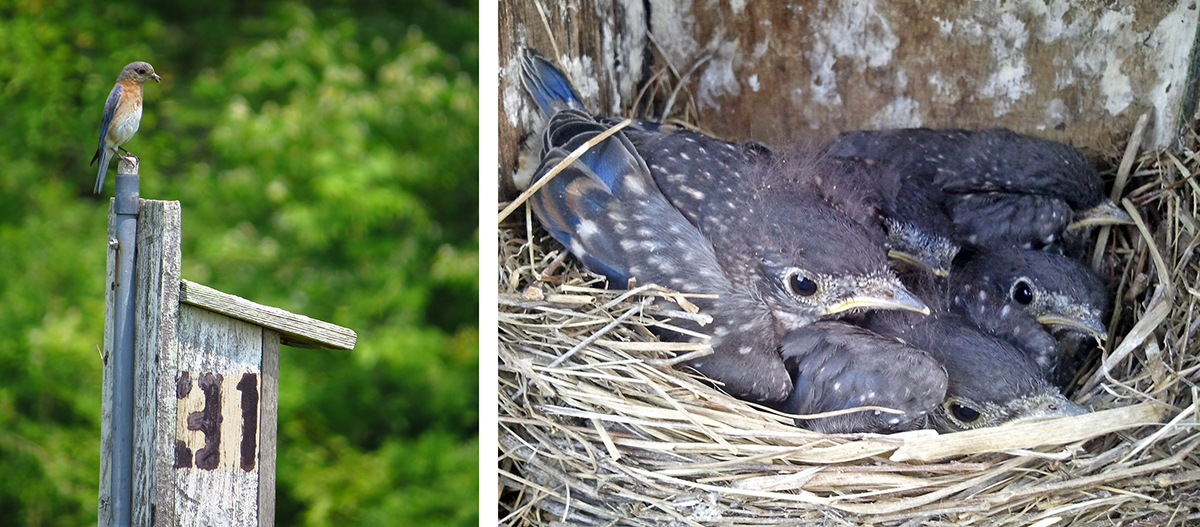
The male also takes on the role of protector, protecting the family from other bluebirds as well as other species of birds trying to take over the nest, such as tree swallows. Prior to laying eggs, bluebirds take time away from the box to eat. In summer, bluebirds feed on insects and their larvae.
After eggs are laid, the female spends more of her time incubating the eggs. Bluebirds lay between three and six pastel blue eggs over a one- or two-day period. The incubation period for bluebird eggs is between 12 and 14 days.
While the female incubates the eggs, the male spends a lot of his time standing on the nest box or in nearby trees to defend his family from intrusion and occasionally to grab food for his mate or himself. After the eggs hatch, the adults take turns gathering food for their growing family. About 15 to 20 days after the eggs hatch, the young bluebirds fledge — that is, they leave the bluebird box to spread their wings and learn to fly. The adults spend the next few days helping the young birds fly and teaching them to look for food. In those few days, the young birds learn to fend for themselves. In mid-summer, adults lay eggs again and raise a second group of youngsters.
Bluebird winters
Once bluebirds have raised their young for the year, they will spend time in and around the area in which they have established their nests. Over the next few months, as insects become less plentiful, the bluebird diet switches to plants and berries. If food is available, bluebirds will remain in the same area year-round.
Unless weather conditions become critical, bluebirds avoid the boxes and will roost in trees overnight. If food becomes more difficult to obtain, bluebirds will migrate short distances, usually to warmer climates, to find the food they need to survive. Most migrating bluebirds return to the same area to nest each year.
Bluebird boxes
The boxes can be placed in pairs, each 20 to 30 feet apart. Tree swallows and bluebirds can be complementary pairings of birds, with each species occupying a box of a pair, and defending the boxes from birds of the similar species. Individual boxes, or pairs of boxes, are usually placed about 100 yards, or a football field, apart. Boxes should be in fields with small trees or bushes around. Boxes should not face ponds or lakes or roads, to protect the fledging birds. A small tree or bush within 100 feet will also help the fledglings.
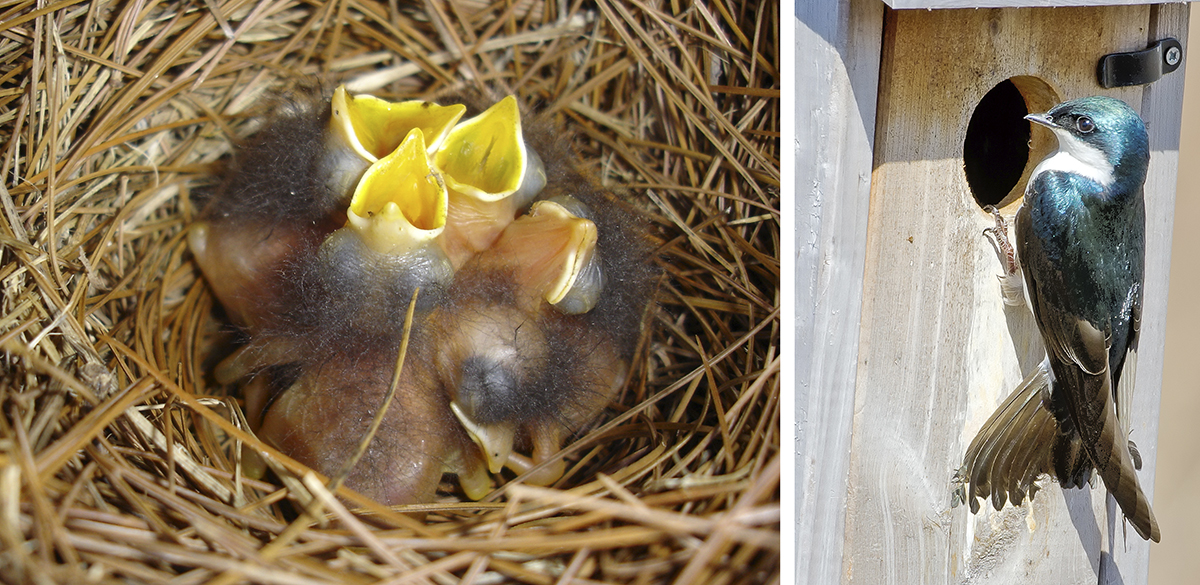
Moore | A tree swallow at the entrance to a bluebird box.Photo Kirt Beiling,
You can help
Each year, Metro Parks puts up new bluebird boxes. You can help by building boxes over the winter months and assist in putting them up in March and April. You can also volunteer to monitor bluebird boxes. A volunteer crew has a specific number of boxes they monitor. Usually, monitors go out every seven to 10 days and take a census of what is happening at their boxes. They record the results on population spreadsheets, which are passed on to a coordinator at each park.
For more information about bluebird conservation in Metro Parks, contact a naturalist at your favorite park. If you want to build your own bluebird box, plans can be found at The Ohio Bluebird Society: www.ohiobluebirdsociety.org
